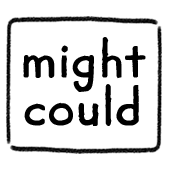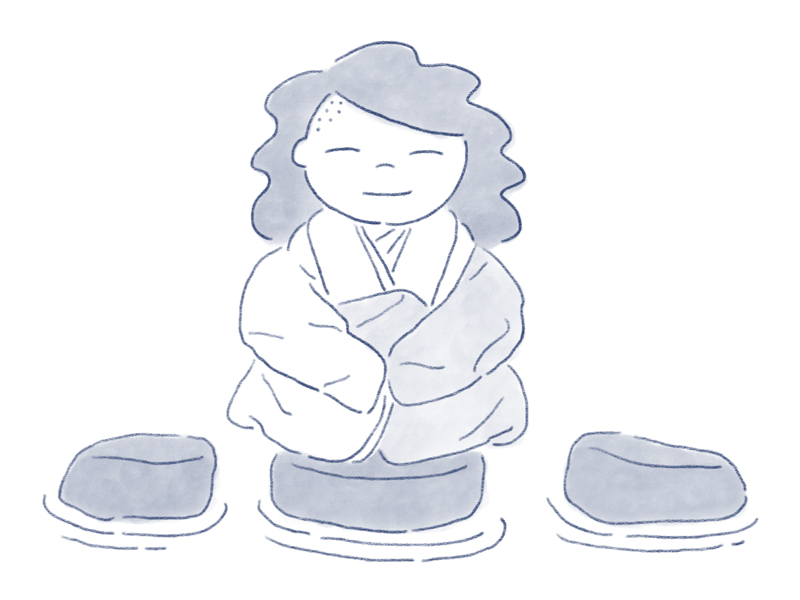5 Things I Learned About Creativity from Jeong Kwan on Chef’s Table
It seems appropriate to begin this article with honesty and transparency, so let me say this: I had a completely different article planned for today. I had it all planned out, fully written and ready to publish.
But last night, as I was eating my dinner and watching Chef’s Table on Netflix, I knew I had to change course. I had to throw out what I had planned to publish, and I had to write about Jeong Kwan.
Jeong Kwan is a 60 year old Buddhist monk who cooks for her community of nuns at Baekyangsa Temple in South Korea. This episode of Chef’s Table is very different than others, and although the series always leaves me exploding with inspiration, this one really made an impact and felt so in sync with everything I’ve been thinking, writing, drawing, and teaching.
I encourage you to watch the full episode if you have Netflix, but in the meantime I would also love to share some of my biggest takeaways with you. Jeong Kwan mainly talks about Buddhism and cooking, but everything she says can be applied to creativity in general.
Takeaway #1: Through creativity, we can share and communicate our emotions.
“With food we can share and communicate our emotions. It’s that mindset of sharing that is really what you’re eating. There is no difference between cooking and pursuing Buddha’s way.” –Jeong Kwan
When applied to creativity, you could read this as:
With creativity we can share and communicate our emotions. It’s that mindset of sharing that is really what you’re seeing. There is no different between creativity and pursuing Buddha’s way.
Now, I’m not a practicing Buddhist, so I can’t explain all of Buddhism here in this article. But to boil it down, some of the key concepts of Buddhism include the search for truth, self-reliance, self-discipline, tolerance, and compassion. Any of that sound familiar to creativity and making art?
- Search for truth // Discovering ourselves to find our voice
- Self-discipline // Putting in the work and committing to drawing consistently
- Tolerance // Accepting failure, mistakes, and different ways of drawing
- Compassion //Being kind to ourselves and others, sharing what we learn
Takeaway #2: Artists can choose which rules to keep or break.
“Jeong Kwan is very spontaneous in her cooking. At the same time she keeps a certain tradition, but she breaks a lot of rules and that makes her very exceptional as a chef, as a cook.” –Eric Ripert, chef and mentee of Jeong Kwan
I often say there are no rules in art. But that’s not altogether true. What I really mean is that there are no rules you have to follow. The wonderful thing about making art is that you get to decide how to do it. People can try to tell you the “best” way to draw or the “correct” way to draw, but really, it’s up to you.
If you follow all the rules, you’ll never be exceptional. You’ll just be the same as everyone else. So be spontaneous in your work. Choose to follow some art rules and break all the rest.
Takeaway #3: Use creativity not to stimulate your mind, but to calm your mind.
Jeong Kwan calls the type of food she cooks for the nuns temple food. She says,
“Secular food is focused on creating dynamic energy. But temple food keeps a person’s mind calm and static.” To keep that balance, Kwan does not cook with garlic, onions, scallions, chives, or leeks. She notes: “Those five spices are sources of spiritual energy, but too much of that energy will prevent a monk’s spirit from achieving a state of calmness. This is a distraction to meditation.” –Jeong Kwan
So often our society is all about go, go, go, be more productive, get more done, accomplish more! It’s a never ending hamster wheel that I find myself on all the time. But Jeong Kwan uses her food, her cooking, her creativity to achieve and send out a state of calmness.
I’ve been thinking a lot recently about mindfulness and calmness as it relates to creativity and drawing. I think they really go hand in hand, and it creates a cycle. I draw to calm myself, and my drawing calms me. Then I am calm and I end up drawing more. The calmness opens you up to accept the creativity and follow your art wherever it takes you.
Takeaway #4: Lose the ego to be creative.
“Creativity and ego cannot go together. If you free yourself from the comparing and jealous mind, your creativity opens up endlessly. Just as water springs from a fountain, creativity springs from every moment. You must not be your own obstacle. You must not be owned by the environment you are in. You must own the environment, the phenomenal world around you. You must be able to freely move in and out of your mind. This is being free. There is no way you can’t open up your creativity. There is no ego to speak of. That is my belief.” –Jeong Kwan
I’m going to practice dropping my ego here, and tell you that I have nothing to add to this that Jeong Kwan didn’t already say better than I could.
Takeaway #5: Put good energy into what you create.
“It’s about being in the present, respecting ingredients, the planet, making people happy. How to be happy in the process. How to put good energy into the food. It’s all of that. That is the big change in my life. The is the influence of Jeong Kwan.” –Eric Ripert, chef and mentee
This concept of being present while you create, respecting the tools, and being happy in the process is vital to a healthy creative practice. It’s essential that you love the creative process and are present in the process to really create the art that’s inside of you. Put good energy in, get good energy out.
In the final scene of the episode, Jeong Kwan’s face fills the entire frame, as she calmly looks into your eyes and says:
“I make food as a meditation. I am living my life as a monk with a blissful mind and freedom. I wish you a healthy, happy life. Thank you.” –Jeong Kwan
I hope this leaves you as inspired as it does me.
And now you’ll have to excuse me—I need to go draw.


